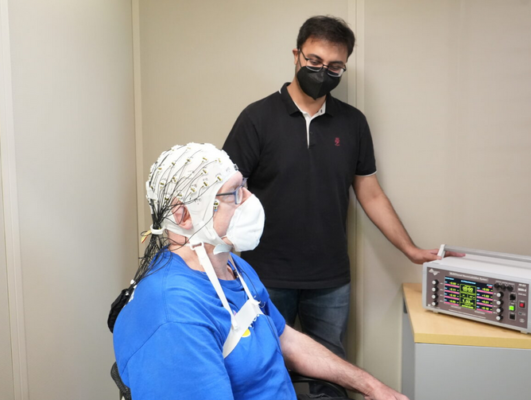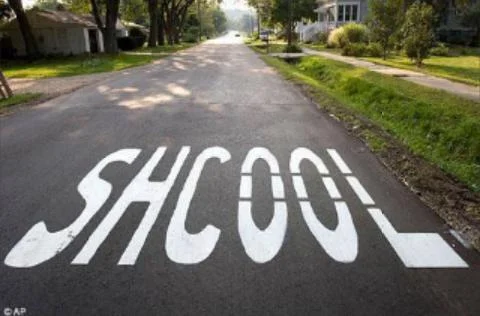Zapping grandpa’s memory, pharmacies go cash-only, food-allergy breakthrough, and more
24 Aug 2022
Posted by Andrew Kantor
Gotta get away
If people around you seem a little more … out of it these days, there might be a good reason.
Americans are using more hallucinogens — from 2002 to 2019, usage overall went from 1.7% of the population to 2.2%. Okay, not a huge jump. But among 18–25 year olds it more than quadrupled — from 0.9% to 4.0%.
That means, say Columbia University psychiatric epidemiologists, that more than 5.5 million US adults are taking LSD, ecstasy, peyote, Red Devils, shrooms, Fantasia, Special K, ayahuasca, Angel Dust … you get the picture. And, with the potential for hallucinogens to treat depression, you can expect that number to keep rising.
q
UGA: Methadone hard to get in Georgia
Methadone can save opioid addicts — it can break their addiction. But UGA College of Pharmacy researchers found that “four of the five Georgia counties with the highest opioid overdose death rates don’t have a methadone clinic accessible within a 15-minute drive.”
A cure for food allergies?
There might be a way to stop food allergies in their tracks, and it’s all about the gut bacteria. Healthy bacteria produce a compound called butyrate, and butyrate can prevent an allergic reaction to food. Ergo, to prevent allergic reactions, make sure people have enough butyrate.
The hard way: Give them a fecal transplant with the right bacteria.
The other hard way: Give them a butyrate pill. “But butyrate has a very bad smell, like dog poop and rancid butter, and it also tastes bad, so people wouldn’t want to swallow it.” (Indeed.)
The (potential) easy way: Create a new delivery system for butyrate*, which is what University of Chicago chemists say they’ve done. The resulting compound goes down easy (or can be injected) and the butyrate is released by digestive juices.
Result: “The treatment restored the gut’s protective barrier and microbiome […] and prevented a life-threatening anaphylactic response when they [the mice] were exposed to peanuts.” And it’s not limited to peanuts, they say — it should work for any food allergan.
* You want the science? Fine: “They polymerized butanoyloxyethyl methacrylamide — which has a butyrate group as a side chain — with methacrylic acid or hydroxypropyl methacrylamide. The resulting polymers self-assembled into aggregates, or polymeric micelles, that tucked the butyrate side chains in their core, thus cloaking the compound’s foul smell and taste.””
(Standard disclaimer: I take everything out of the American Chemical Society with a grain of salt, but still, this is clearly interesting news, assuming it’s not hype.)
Salty news
Salt and your blood pressure
We’ve had an inkling for a while that there’s a connection between salt and hypertension, but the details are only now emerging.
Cutting to the chase: Researchers at Vanderbilt University have found that a high-salt meal will cause a spike in blood pressure in half of people who have hypertension, and in a quarter of people who don’t.
Why? They have a slightly different receptor in some immune cells, and what they have is super-extra-very sensitive to salt. For those people, a large McDonald’s fries can cause a burst of inflammation … and a potential heart attack or stroke.
At the the sensitivity can’t just be switched off, but it can be tested for, meaning folks with that salt-sensitive phenotype can switch to bland meals, at least for now.
Salt and your weight
Sugar makes you fat. Fat can make you fat. But you know what else can cause obesity? According to a University of Colorado researcher, too much salt and too little water.
What do those have in common? Thirst — they cause dehydration. And dehydration encourages the body to create fructose from both carbs and starch. It also gets the body to produce more vasopressin, which stimulates fat production to store water. Together … well, unless you’re in survival mode, they spell obesity.
Naloxone priced out of reach
Naloxone can stop an opioid overdose in its tracks, and it’s available free in some places thanks to government grants, private charities, and good Samaritans.
But not everywhere, and that means people die or end up in hospital because they can’t afford to carry it. In fact, found researchers at the Rand Corporation, for people without health insurance, the out-of-pocket cost for a single naloxone prescription hit $250 in 2018.
While many states have adopted laws to make it easier to prescribe and dispense naloxone, less attention has focused on potential financial barriers to naloxone access.
Reminder: Naloxone does NOT require a prescription in Georgia. (Read more.)
Shocking seniors
If you’re looking for to give grandma or grandpa a scare, leave this article out for them.
It seems that weak electrical currents delivered to the brain via the skin — this particular process is called transcranial alternating current stimulation, or tACS — can help fight the effects of memory loss in seniors.
By zapping the brain in precise regions with unique frequencies of alternating current “we could improve either short-term or long-term memory separately. And with this intervention across four consecutive days, we could change memory and watch the benefits accumulate.”

Are you ready to rewrite your will now, Granddad?
RSV vaccines coming Real Soon Now
Two stories within a few days, and both tout a potential vaccine for RSV — respiratory syncytial virus, which kills more than 100,000 children and sends 3.6 million to the hospital each year.
Niversimab, out of the Telethon Kids Institute in Australia:
[A] long-lasting monoclonal antibody treatment for babies is likely to be accessible on the market within 12 months, followed closely by the approval of a maternal vaccine given in pregnancy to provide newborns with protection against the virus.
CAF-08/RSV, a new protein-based vaccine out of Boston Children’s Hospital:
[It protected against a direct challenge with RSV, with no evidence of any harm to the animals. Further studies showed that it induced Th1 cells and CD8+ T cells (also important in inducing cellular immune responses) that specifically recognized RSV, as well as neutralising antibodies.
The Long Read: Cash Only Pharmacy edition
Would you believe that there are pharmacists who are frustrated working with insurance companies and PBMs? Apparently so — and (slowly) some are going cash-only … and their patients like it.
As patients struggle with rising prescription drug prices and insurance deductibles, everyone from members of Congress to entrepreneurs like Mark Cuban and small-business owners like [pharmacist Nate] Hux are trying to lower drug costs. By opting out of the insurance system altogether, Hux and other cash pharmacy owners are able to avoid many of the fees and rules that inflate medication prices. Consumers say they are reaping the benefits.
Interesting: The pharmacist in the story runs ‘regular’ and cash-only pharmacies next door to each other and ”advises patients which of his two side-by-side pharmacies will be the best place to fill their prescriptions.”
Just because it’s your job doesn’t mean you’re actually doing it RIGHT
“Our job is to drive down costs on behalf of the consumer and those paying the bill for health insurance.” —JC Scott, president, Pharmaceutical Care Management Association.



